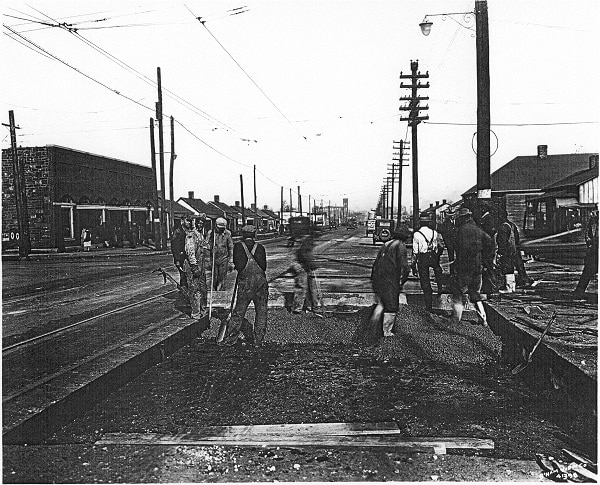Researchers have started an effort to restore what was once a thriving and unique community called Sloss Quarters.
Sloss Furnaces workers. Photo courtesy of Sloss Furnaces.
Whenever 69-year-old Johnnie Mae Clark feels nostalgic for her childhood, all she has to do is jump in the car and make a short drive.
“I haven’t found another place like Sloss. I love being out here it brings back memories and I feel free,” Clark says.
Clark was born at Sloss Quarters in 1945. Her father worked at Sloss Furnaces for more than 40 years. One reason he stayed so long was the company provided housing, a safe and secure place to live.
Researchers are collecting the oral histories of families who used to live there. Karen Utz is the curator of Sloss Furnaces National Historic Landmark. She says the company encouraged “family men” to live at the quarters. Her hope is that when people visit, it’s more than just a tour of the furnaces.
“Now you can put a face with the place, if you will. It’s kind of like the ‘Ah ha!’ moment. So, this is what the women did,” says Utz.
The women of Sloss cared for their children. But they also made money selling home cooked meals to workers. That helped them escape becoming domestic servants to families in Birmingham suburbs, something more difficult if they didn’t live at Sloss Quarters.
Each family had a garden. There was a doctor’s office and a commissary. 23rd St. Baptist Church was close by and Thomas Elementary School was across the street. And every family lived in an open “shotgun style” house.
Starting in 2012 researchers started an archaeological dig in an empty field where rows of houses once stood. They found perfectly preserved soda bottles, toys, bones, and even dog tags from World War II.
Artifacts found reveal how people lived in Sloss Quarters. Photo courtesy of Jun Ebersole.
Jun Ebersole is the Collections Manager at the McWane Center and he led the dig. He says those artifacts help tell the story of the people of Sloss.
“The research potential of this site is unbelievable. The unique stories it can tell about the families living at Sloss Quarters, it’s not a story that’s been told,” Ebersole says.
Students search for artifacts from Sloss Quarters. Photo courtesy of Jun Ebersole.
That’s changing. The original houses of Sloss Quarters are long gone. But together with the city of Birmingham, Sloss Furnaces purchased a shotgun house and moved it to the grounds. It’s in the process of being restored so when tourists visit, they can see what it looked like.
After the house is finished, in partnership with the Birmingham Historical Society, Sloss Furnaces will take artifacts and research to create a unique Sloss experience.
Walking the grounds of Sloss among the boilers and blast furnaces, Johnnie Clark goes back in time to her childhood. She can remember the hot days, the cookouts, the dancing, the long nights spent on front porches.
She feels her dad’s presence. It’s around lunch time, and when she was little, this would have been when she brought him his home-cooked lunch. She stands in the shade of an overpass as cars drive by.
“I can feel him up there working. I can see him up on the stairs working. I can see other guys around on the furnace he wasn’t the only one up there. And he’d come out and be sweating and I’d be like ‘daddy you hot?’ He said ‘it’s hot up here girl!'” Clark recounts.
Some day soon, perhaps next year, she hopes others will see more than the old pipes, boilers, and furnaces, they’ll see the people and the families that kept them running.

